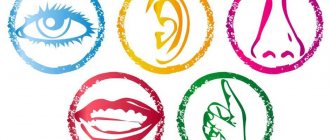Sadness (sadness) is one of the main emotional states. Together with joy, fear and anger, they form the core of the world of human emotions. Often the experience of sadness is associated with characteristic bodily sensations, behaviors or thoughts. We associate it with feelings of depression, reluctance to be active, and withdrawal from social life. It also sometimes happens that the intensity with which we feel sadness turns into physical complaints of a psychosomatic nature.
Sadness - when we experience it, it is usually accompanied by many unpleasant feelings. Sadness is often caused by situations we don't want to experience, so it seems natural to want to avoid or ignore them. Meanwhile, the natural counterbalance to sadness is joy, so desired these days.
It's good to be happy and full of energy. The world created by the media and rapidly changing cultural norms favors joy, and the pursuit of it becomes a priority. Then the feeling of joy becomes a “duty” and sadness is perceived as failure. We often think that if we don't feel happy, then we probably have some kind of problem. That the natural state should be joy and the emotions derived from it.
However, in order to be able to talk about inner balance, we need to experience the full range of emotions and strengthen our ability to distinguish and name the states that “flow” through us. It is the ability to experience and experience all emotions that makes our life complete. It's worth taking a break and looking at your own emotions. Find out what we really feel, maybe what we call sadness is actually anger, and what we call fear is actually sadness.
It often happens that during development we learn to respond to a stimulus with an emotion that does not suit us, but for some reason, even though it does not benefit us, we do it. There are times when each of us finds it difficult to name what we are feeling, and the emotions we experience are complex. Some segments of the population find it more difficult to regulate their emotions than others. Under their influence, they do and say things that negatively affect various areas of life, including complicating relationships, limiting daily activities, etc.
See also: Psychological violence
It is worth remembering that the world of emotions is complex. We do not feel one emotion, usually what we experience is a combination of different states of varying intensity.
A person is in a state of sadness: how to determine?
Determining whether a person is in a state of sadness is not difficult. He becomes detached, withdrawn, withdraws into himself and his thoughts, and there is sadness in his eyes. At such moments it is difficult for him to be active, and he is not in the mood to do anything. There is no desire to communicate with people. I want silence and solitude. At such moments, life seems to slow down.
Often those around us try to help their neighbor, to get him out of the vicious circle of sadness. Is it necessary? Most often, a person just needs to get over the illness, allow himself to be alone, if he wants, to cry and throw out his feelings. If he does not want to share his experiences, his condition, it is better not to impose himself, but to provide support when he himself asks for it.
Modalities of emotions. Sorrow. Sadness. Nostalgia. Anxiety
Despite the seemingly obvious dissimilarity of many emotions, they are often determined and distinguished by a considerable number of healthy individuals. Significant disagreements exist on this issue in the specialized literature. This should not be considered alexithymia, a disorder in which there is an inability or loss of ability to differentiate and describe one's own emotions and those of others. The structure of emotions is complex, and there are quite a lot of emotions themselves. Wundt, for example, believed that the number of different emotions is much greater than 50,000. Next, we will describe the most common interpretations of emotions and feelings. We believe that this is important in terms of a more adequate assessment of emotions, especially in those frequent cases when not just one, but several emotions are observed simultaneously. We believe that this may be important for analyzing and distinguishing normal emotions from those altered by some kind of mental disorder. External manifestations of emotions are not described in detail here. On this, see Psychopathology (2002). So, the modalities of emotions are of interest to the psychopathologist.
Grief or sorrow. Associated with the loss of the most important values (loss of loved ones, separation of a child from his parents, generally a huge misfortune that breaks the individual’s connection with people and society). It is experienced differently, it depends on age, gender, personal qualities, belonging to a certain culture, social group. Nevertheless, the picture of grief among different people has much in common. Grief includes deep depression, anxiety, guilt, gratitude, the ability to respond to the suffering of others remains, it can even worsen, there can be despair and a feeling of hopelessness. Your own grief at the sight of the suffering of others always leaves room for sympathy with the desire to help and support.
Grief is contagious: everyone suddenly begins to clearly understand that something similar can happen to him at any moment, he feels that envy, gloating, bitterness and much more, which now seems like something petty and unworthy, are leaving him. The sight of grief ennobles even the most callous souls. This strengthens the connection between people, destroyed by pride, vanity, and greed. Only an emotionally stupid person or someone who is not entirely prosperous spiritually does not know either true grief or what a person experiences in the abyss of misfortune. The experience of grief is highly dependent on learned cultural traditions. In collectivist cultures, where there is strong support from some people to others, grief is experienced more stoically. In American culture, grief and guilt are closely linked, and there is something painful about it.
In Norwegian culture, on the other hand, grief and guilt are orthogonal; they are far from each other, perhaps because it is customary for Norwegians to support each other not only in trouble. Bowlby (1960) notes the adaptive value of grief: it helps a person “overcome himself,” as if to rise above himself and show himself to people from the best side. R. Tagore wrote about the same thing: “Great grief in oneself eliminates pain. And small troubles, losses, insults are so heavy that the soul is torn from these evils.” It is especially difficult for the lonely in grief; the Bible says so: “Woe to the lonely!” Grief can break a lonely person so that he will never rise again. In such not so rare cases, grief becomes a disease. This is probably what V. Dahl had in mind when he wrote that grief is not only a difficult mental state, it can cause disorder and illness. In Russia, therefore, medical histories were called mourning sheets, and psychiatric hospitals were called mourning houses, which seemed to indicate the general opinion that it is grief that especially often brings an unhappy person there. The ordinary people of Russia, as F.M. Dostoevsky testifies, always treated hospital prisoners, as well as the deeply disadvantaged inhabitants of prisons, with touching care, even during the birth of capitalism. External manifestations of grief are varied: mourning clothes, saddened faces, crying, sobs, words of love and gratitude to the departed and at the same time a warm attitude towards others, efficiency and the desire to fulfill one’s last duty with honor and a sense of dignity.
Sadness or melancholy (sadness, painful sadness, despondency, blues). This is a complex of emotions, including, according to K. Izard, tension, impulsiveness, self-confidence, and pleasure. It is difficult to translate from Russian into Russian, but apparently what we are talking about is that melancholy represents mental constriction, self-doubt, inhibition in thoughts, actions and, finally, loss of the ability to experience pleasure. Longing is mourning for a once-lost happiness, bestowed by fate according to some higher laws of justice, but not owed to people or to one’s own efforts or merits. Longing is the narcissist's lot. Melancholy seems to gnaw at a person from the inside and undermines his mental well-being, spiritual essence and physical health. A person in melancholy looks at everything that happens indifferently, he is also consumed by boredom.
He withdraws from people, suffers from loneliness and harbors resentment towards those who deprived him of his former paradise. Melancholy sometimes turns into embitterment or even hatred, and this, in turn, entails a feeling of guilt, dissatisfaction with oneself, if a person has not yet completely lost himself. Melancholy does not generate such reciprocal compassion as grief, and a person can become bitter towards people. The present life in melancholy seems to have no meaning, the future is devoid of prospects and dark. The feeling of loss of meaning pushes one to commit suicide. Such suicides do not leave behind farewell notes asking them not to blame anyone. The motivation for suicide can also be revenge, an expression of the desire to punish someone.
Melancholy blocks productive activity, leaving a person with little chance of overcoming the blues. In the depths of melancholy, uncertainty and a feeling of inferiority are discerned, which do not give peace and sometimes cause unbearable torment. When there is shallow melancholy, people try to unwind, so as to “forget the world and their unhappy lot.” Some go to great lengths, strive to get into risky and dangerous situations, others start and change intimate relationships, some “eat up melancholy,” others may become addicted to gambling, alcohol, in search of thrills they try in various, usually unreasonable ways to diversify their life. , become extremists, terrorists, etc. Of course, there are other types of melancholy; a lot depends on the person’s personality. There is a “light sadness” that does not darken the life of either oneself or others. They write about “high sadness”—longing for something sublime, fair, and humane. But any sadness inhibits activity and makes a person more contemplative than a creative being.
Nostalgia is a longing for the Motherland, the places where childhood was spent and affections, childhood friendships and joys were lost. Reflective intellectuals and creative people who have not found spiritual shelter in a foreign land are especially susceptible to nostalgia. People who have a reduced ability to form stable and deep attachments, people for whom their homeland is where they live quite comfortably today, are not susceptible to nostalgia. The exiles of the Motherland especially grieve; artistic natures suffer cruelly from this. In a foreign land, they languish and experience a severe creative crisis, which doubles their suffering. Such longing “for the Motherland sometimes turns into a serious illness,” writes V. Dal. In mythology, nostalgia is represented by longing for an ancestral home, a lost paradise and the virgin, sinless life of man.
Anxiety (anxiety) - strong excitement, restlessness, mental storm, confusion (V. Dahl). Often defined as pointless fear, free-floating fear, fear of something unknown. The anxiety of dreamy and suspicious people is the fear of something imaginary, associated with fantasy, an exaggerated expectation of misfortune. People who are not confident in themselves are prone to anxiety and are afraid of losing control over the situation. Anxiety is, finally, characteristic of people who have experienced many misfortunes in the past or one failure after another. At the same time, it is as if an attitude is being formed to expect, first of all, some threats in the future. Anxiety is characterized by painful forebodings, exaggeration of possible misfortunes or the likelihood of their occurrence, a feeling of internal tension (tension does not necessarily indicate anxiety), haste, fussiness, the feeling that you are always late for something.
| | Pathological anxiety is a mental illness called an anxiety disorder. If you have pathological anxiety, we advise you to consult a psychiatrist |
In patients with anxiety, the mentioned experiences increase many times over: “I’m in a hurry all the time, it seems I can’t get anywhere on time, as soon as I do something, I immediately take off... I’m constantly in a hurry somewhere, rushing somewhere, always in tension, and it seems as if “I won’t have time to do something important... I feel like a person who knows that he will die soon and is afraid that he won’t have time to do something very important.” In anxiety, expressive actions clearly prevail over instrumental ones. According to K. Izard, anxiety is a complex emotional pattern, including, in decreasing order, fear, interest, guilt, disgust, embarrassment, anger, surprise and joy. The author believes that anxiety cannot be considered as a separate, independent phenomenon. In each specific case, K. Izard believes, it is necessary to understand what specific emotions create anxiety. This may mean that there are many variations of anxiety. In fact, anxiety varies, but is mainly related to a person’s personality traits and, as mentioned, his character.
According to E. Shostrom (1994), in anxiety a person strongly and persistently wants to do something, but cannot. At the same time, he suppresses the aggression growing in him, as a result of which he falls into apathy. Masserman (1955) views anxiety as the result of a collision between two opposing tendencies, such as attack and flight. In existential theory, anxiety is an emotional state that accompanies awareness of the meaninglessness, imperfection and inherent chaos of the world in which we live. The position of the existentialists in this case expresses the state of a confused person, in whose eyes the world has turned into remnants of its former order and predictability. S. Freud distinguishes between “signal anxiety,” which warns the Ego of an impending threat to its integrity (and here he seems to be aligned with the existentialists), and “primary anxiety,” an emotion that accompanies the disintegration of the Ego and manifests itself in nightmares.
Let us add that a person can also have anxiety in relation to himself, although this is clearly a painful anxiety. Patients experiencing unacceptable, “abnormal” impulses often remain in anxiety for a long time, with tension and fear expecting some dangerous, crazy actions from themselves, which seems identical to the “signal alarm”.
It is quite difficult to combine definitions of anxiety from different psychologists, as this concept is so multifaceted. In anxiety, however, there is almost always one very significant element present - this is the fear of an imaginary, far-fetched danger, which sometimes seems quite possible, almost real or even inevitable. This may mean that anxiety is somehow related to disturbances in self-perception, namely personalization. The highest degree of anxiety is complete confusion and confusion.
Back to contents
Causes of the condition
A person may be sad for certain reasons: parting with a loved one, unfulfilled plans and dreams, a series of minor failures. Many things can unsettle your usual life. But all this is a consequence of the fact that life is not turning out the way we would like. These are symptoms that something needs to change. The one who has lost hope is very overcome by sadness. In order to regain faith in the future, sometimes you need to overcome several difficulties, in particular those related to internal changes. Changes in yourself and in life are very rarely easy and natural.
Sadness is a serious stage in life, overcoming which is considered a huge achievement. A serious reason for the occurrence of such a condition can be the passing of a loved one. In such a situation, only time can help. There is no point in trying to return a bereaved person to everyday life. Over time, the pain will subside, and he will plunge into the rhythm of normal life.
Types of emotions.
Well, now let's focus on emotions! There are three types:
- primary,
- secondary and
- background.
Primary emotions are those that are easily perceived by people, such as fear and joy.
Secondary emotions - these are not so easy to notice, such as nervousness, guilt or shame.
Background: they are not noticeable, for example, calmness or fatigue. They are difficult to perceive because they are more connected with the inner world of a person than with the outer world.
The sadness has passed - the consequences remain
What happens inside our body when we are in a state of sadness? Depending on the temperament and the cause of sadness, a person can either experience it more or less calmly or fall into hysterics or stupor. But in any case, most often in this condition, blood pressure increases and the heart rate increases, which can lead to a heart attack. After losing a loved one, your risk of having a heart attack is 21% higher than normal. The adrenal glands produce more cortisol (the stress hormone), which can lead to insomnia and stomach problems. The immune system is greatly weakened and sensitivity to cold increases. The brain begins to work harder, because during sadness a person thinks a lot, analyzes, remembers, suffers and looks for reasons.
When sadness passes, especially if it was not just the autumn blues, but something serious, the consequences can manifest themselves in the body for a long time. Heart and stomach problems may occur.
Sadness is an emotion that affects our body
There is also a strong interaction between emotions and the body. Our posture (sunken chest, drooping shoulders, etc.), tone of voice and facial expression are an expression of the sadness we have experienced. While reading emotional signals can be difficult, it is easier to notice symptoms coming from the body. Therefore, it is worth paying attention to your emotions when:
- strange, difficult to identify pains occur;
- our attitude begins to differ from usual;
- slow movements, avoidance of activity;
- lack of appetite or excessive desire to eat;
- lack of energy, prolonged feeling of fatigue for no apparent reason, etc.
Fortunately, the relationship between the body and emotions works on a feedback principle, so body work, movement therapy, etc. may be one way to return to balance.
While it's good to keep an eye on your sadness, it's worth paying attention to your joy for balance. Because after we have experienced sadness and “done the homework” that it has become for us, it can be helpful to strengthen the areas that help us feel happy. It's about finding the true sources of joy after experiencing sadness, and not pretending not to feel sadness by covering it up with joy.
I encourage you to discover what makes us happy, what promotes a sense of serenity and peace, and what causes euphoria. Perhaps we have not experienced conscious joy for so long that the answers to these questions are difficult to come by. Then I encourage you to experiment and do your own research. You may find that what used to be a source of joy was the company of friends, but now it might be exercise or regular meditation. There are many ways to restore balance after experiencing grief, and it is worth creating your own set of tools to use.
What to do if you are depressed?
The state of sadness and sadness can develop into depression if a person does not make any attempts to cope with his emotions. Only a qualified specialist can determine whether it is sadness or depression. But there are some symptoms that suggest that a person has become depressed:
- apathy, lack of interest in life and any activity;
- feeling of emptiness;
- excessive appetite or lack thereof;
- feeling of worthlessness;
- insomnia or drowsiness and hypersomnia – increased number of hours spent sleeping;
- thoughts of suicide;
- inability to concentrate;
- avoiding problem solving;
- a persistent feeling of fatigue even after sleep and rest;
- lack of motivation to do something.
If a person has at least five of the listed signs, he needs to see a psychotherapist.
Is a completely carefree life possible?
Possible. True, such a life is difficult to imagine. After all, if in this world it is possible to achieve a carefree state of mind, then it is, as a rule, very relative and has a short-term nature.
It’s not the same, but it was different in the early days. Primordial people, being in paradise, possessed benefits that fully gave them mental and physical satisfaction. In fact, they did not even have a reason for severe sadness. Sadness, as a state of discontent and sorrow, entered the world with sin.
Life in the Kingdom of Heaven, which will open after the Second Coming of Christ and the Last Judgment, will be free from any sorrows. This state of the righteous will correspond to unceasing joy, happiness, bliss (Rev. 21:4).
How to get rid of it and is it necessary to get rid of it?
Whether you should try to pull yourself out of the bonds of sadness or leave everything as it is so that it goes away on its own depends on what kind of sadness has overtaken you and the seriousness of its causes. If this is the experience of losing a loved one, then only time can return a person to normal life. You can offer your help, but do not impose. A person must survive this and understand that life goes on, independently.
If a trouble in life occurs that is not related to the death of loved ones (problems at work, disruption of plans, deception and betrayal), then you can withdraw into yourself for a while. A writing technique can help: take paper and write down all the thoughts that are spinning in your head. You need to not keep your emotions inside, but give them a way out.
Well, if this is the influence of the weather, you can wrap yourself in a blanket for a while, brew delicious tea or cocoa and watch the rain dripping outside the window, or read an interesting book or watch a movie.
Misconceptions and myths about sadness
Let's figure it out, is sadness good or bad? First, let's debunk some of the most common myths about sadness that we have encountered in our lives over the years.
Myth #1: Being sad means being depressed.
Equating sadness with depression is a major mistake many people make when discussing their emotions. Most psychologists say that sadness is an indicator that a painful event has occurred in your life, usually a loss or some kind of emotional trauma. If you were in a relationship for a long time that ended suddenly, of course you would be upset about the loss of affection. If someone close to you humiliates or rejects you, it is logical that you will feel sadness and suffering.
What is the use of sadness?
Sadness is a healthy emotional response to pain or loss and signals a need for care and compassion from oneself and others. Depression is a clinical disorder in which a person does more than just feel sad. In contrast to sadness, people struggling with depression have very little self-image and often think that the world would be a better place without them. Depression is not sadness, but it often involves a lot of sadness that has not been addressed or expressed.
Myth #2: Showing sadness is a sign of weakness.
Sadness is one of our most powerful emotions because it signals and attracts other people to us when we express it. In other words, sadness is the emotion that most often evokes sympathy and concern from others. Think about a crying child - he has no other way to express his needs for help and care other than to cry. Crying and expressing discomfort or distress is the first way we learn to communicate our needs for care and support from the world around us. Sadness is meant to be noticed and responded to by other people because we are a very social species.
In fact, many believe that homo sapiens as a species, without claws, venom, or any other natural defenses, has survived and prospered due to our ability to read, respond to, and cooperatively manage each other's emotions as a group. When we comfort those who are afraid or suffering, or when we receive support and encouragement from others, there is an effective response to sadness in the form of empathy, which acts as a “cooling” for our entire nervous system. The ability to "cool" or regulate our nervous system collectively allows us to effectively engage our thinking (prefrontal cortex), so we can plan, create, and achieve success, whether it's facing off against a saber-toothed tiger or sending a man into space. Communicating our emotions to each other to effectively manage strong emotions as a group is our greatest strength as a species. Failure to express sadness robs you of this evolutionary gift.
Is sadness so terrible?
Myth #3: If you allow yourself to be sad, you will be stuck in this state forever.
Psychologists' biggest challenge in clinical work is helping people believe that they can experience strong emotions without becoming overwhelmed or "stuck" in painful feelings like sadness. Although emotions may seem powerful and overwhelming, in reality all emotions are quite fleeting and short-lived, as they arise only to signal immediate action. Emotions are simply your mind and body's way of drawing your attention to something in your environment or life, perceiving them as “text messages” from your five senses. Sometimes people have difficulty properly understanding and responding to their sadness because they believe in myths that make sadness a rather dangerous and threatening state. This is where most people get stuck.
You will receive comfort and relief by just showing your sadness to the other person in the right way and it will go away. You need sadness more. All emotions pass when we react to them with the right action. And sadness is no exception.
Now that we have debunked the most common myths about sadness, let's talk about the benefits of sadness for our psyche and body.
How to distinguish sadness from depression?
What are the next steps?
Sadness is not a reason to give up on yourself. From time to time, each of us has troubles: we break up with people, something goes wrong, the weather is not pleasant. Although you can give yourself some time for sadness, you need to stop in time, analyze the reasons, learn a lesson for yourself and move on, along the path to a happy life. No one but ourselves is responsible for our happiness. Therefore, the time will come when you need to pull yourself together, and if necessary, consult a psychotherapist.
Sadness teaches us that our life is a series of pleasant and not so pleasant events, that we need to overcome difficulties in order to become stronger for ourselves and our loved ones, so that at any moment we can provide them with the necessary support.
Sadness and depression
Temporary low mood, sadness that comes and goes, is a natural experience for every person. Sadness that occurs as a consequence of a specific event, e.g. loss of a loved one, separation, etc. This is an adequate reaction of the body, and we should not worry about it. However, if the condition drags on, we cannot come to our senses, or it seems that it has arisen for no apparent reason, it is worth seeking advice from a specialist. Sadness is not the same as depression, but being under the influence of strong emotions makes it difficult to look at the situation soberly. Therefore, a conversation with a psychologist, psychotherapist or psychiatrist can help rule out illness, help restore balance and consider the mechanisms that accompany sadness.
Peaks and abysses, ups and downs
To understand how sadness differs from melancholy, let’s consider some features of the visual vector, since it is its owners who are distinguished by their enormous emotional amplitude, which is greater than in any other vector. Also, people with a visual vector have the highest frequency of state changes. When talking about changes in states in visual people, the conventional term “swing” is used. It is vibrations of this type that convey transitions from one state to another well.
If you depict a “cardiogram” of visual emotional swings in the form of a sinusoid, then with its help you can very clearly demonstrate the amplitude and frequency of changes in states. At the lowest point of the sinusoid, one of the root emotions of the visual vector will be located - fear, and at the highest - love. In the highest feeling of love for another, vision rises to maximum emotional heights, breaking away from fear. And in the same way, when experiencing the greatest fear for oneself - the fear of death - one moves away as much as possible from love.
This is how swings happen: down - up, up - down; into yourself - out, out - into yourself. Visual people fall into their lowest states from their inability to interact with other people. Self-pity and anxiety only about oneself speaks of feelings that were undeveloped in childhood, when an emotional visual child was not allowed to express these feelings or was unknowingly intimidated by reading scary fairy tales. As a result, we get bad lower states. A developed visual vector is capable of empathy, compassion, and love. It gives an emotional boost.
All emotions have their own sinusoids of “swing”. The only difference is the magnitude of the amplitude and the frequency of state changes. Some states are as brief as a moment, others are experienced longer. In some we fall like a stone or take off like a bird. In others we go down smoothly or rise up just as smoothly. The amplitude of ups and downs depends on many reasons, the main of which are the level of development and implementation of the visual vector. A developed and fulfilled person will not feel the need for sudden emotional leaps; his states will gradually flow from the upper to the lower. From joy to sadness. From tears of gratitude to tears of compassion.
Such transitions between states in the visual vector fill life with emotional experiences. Such fluctuations are vital to vision. It's like breathing: inhale - exhale, filling - emptying. You can only breathe in different ways. Or smoothly and calmly, naturally, without noticing this process. Or greedily gasping for air, choking and losing the normal rhythm.











